Digital Poster
Tractography
ISMRM & ISMRT Annual Meeting & Exhibition • 10-15 May 2025 • Honolulu, Hawai'i

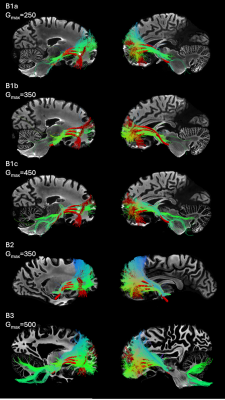 |
Computer Number: 49
1421. Ex
vivo diffusion MRI protocol optimization on the Connectome 2.0
scanner for reconstructing cortico-subcortical projections
C. Maffei, T. Gong, D. Sung, G. Ramos-Llorden, A. Scholz, M.
Mahmutovic, B. Keil, S. Huang, A. Noecker, C. McIntyre, A.
Yendiki
Athinoula A. Martinos Center for Biomedical Imaging, Charlestown, United States
Impact: We seek to establish a cutting-edge diffusion
MRI protocol to collect data on ex vivo human brains, which
will be accompanied by correlative microscopy and serve as a
resource for the research community, to benefit both
methodological and neuroanatomic studies.
|
|
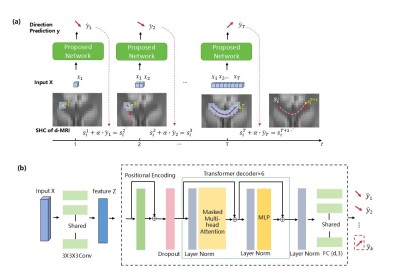 |
Computer Number: 50
1422. Deep
Learning-Based Diffusion MRI Tractography: Integrating Spatial
and Anatomical Information
Y. Yang, Y. Wu, Y. Feng, X. Zhang
School of Biomedical Engineering, Southern Medical University, Guangzhou, China, Guangzhou, China
Impact: The proposed method successfully generates
anatomically plausible streamlines across both synthetic and
in-vivo human brain datasets. These promising results
suggest that exploring additional novel information could
further improve the anatomical reliability of white matter
mapping.
|
|
 |
Computer Number: 51
1423. Fiber
tractography: Linear versus Planar b-Tensor encoding DWI
S. Baete, P. Filipiak, F. Boada
New York University Grossman School of Medicine, New York, United States
Impact: Increasingly faithful visual representations of
brain structural connections are expected to improve
neurosurgical planning and lesion resection. We report that
tract visualization can potentially be improved by using
Planar instead of Linear b-Tensor Encoding DWI.
|
|
 |
Computer Number: 52
1424. Data-Augmented
Deep Learning for Tractography Parcellation of Diffusion MRI
with Incomplete Field of View
Y. Chen, L. Zekelman, S. Cetin-Karayumak, Y. Lo, J.
Legarreta, Y. Rathi, N. Makris, F. Zhang, W. Cai, L.
O’Donnell
Harvard Medical School, Somerville, United States
Impact: dMRI scans with incomplete FOV are common in
real-life clinical and large-scale research datasets and
pose great challenges to identification of anatomical
tracts. We propose the first deep learning framework to
achieve robust parcellation of tractography affected by
incomplete FOV.
|
|
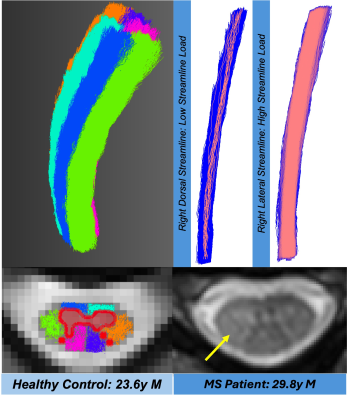 |
Computer Number: 53
1425. Tract-Specific
Analysis of Cervical Spinal Cord Aberrations in Multiple
Sclerosis Patients at 3T
A. Witt, G. Sweeney, S. Fleishman, D. Houston, L. Prock, T.
McGonigle, S. Vandekar, S. Stubblefield, C. McKnight, K.
O'Grady, M. Chamberland, K. Schilling, S. Smith
Vanderbilt University Institute of Imaging Science, Nashville, United States
Impact: We provide a novel method to visualize and
characterize spinal cord pathology via tractography in
multiple sclerosis patients that may be used to evaluate
complex microstructural damage when combined with precise
lesion location and scalar indices such as fractional
anisotropy.
|
|
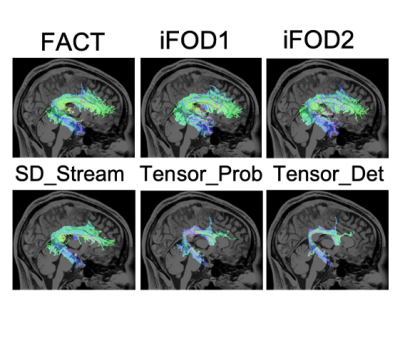 |
Computer Number: 54
1426. Tractography
based white matter tract segmentation is robust to anisotropic
resolutions
E. McMaster, N. Newlin, C. Cho, J. Yoon, F. Rheault, B.
Landman, K. Schilling
Vanderbilt University, Nashville, United States
Impact: We show that some algorithms, when paired with
well-defined beginning and endpoints for major pathways,
show stability in highly anisotropic data.
|
|
 |
Computer Number: 55
1427. Optic
radiation microstructure as a biomarker of visual function in
paediatric Bardet-Biedl Syndrome
Y. J. Li, K. Seunarine, E. Forsythe, P. Beales, J. Clayden,
C. Clark
University College London, London, United Kingdom
Impact: In BBS, optic radiation tractography and
diffusion-based microstructural measures can serve as
biomarkers of visual system structural integrity,
potentially reflecting disease progression and treatment
efficacy. This is promising for monitoring clinical
outcomes, particularly in future clinical trials for BBS.
|
|
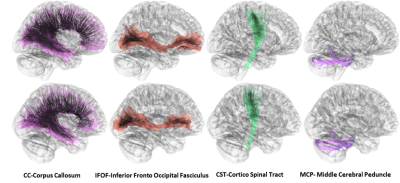 |
Computer Number: 56
1428. Inter-scanner
and intra-scanner harmonization of DTI tractography analysis
R. Gattu, V. Truong, Y. Xuan, F. Bao, M. Ismail, J. Zhong,
H. Minhas, I. Gattu, S. Buch, Y. Chen
Wayne State university, Detroit, United States
Impact: This is the first study to compare DTI and
tractography metrics between CIMA.X and VERIO visualizing
the white matter architecture and connectivity pathways
reconstructed by the q-space diffeomorphic reconstruction
(QSDR) method using spin distribution function (SDF) in
resolving the fibers.
|
|
 |
Computer Number: 57
1429. Toward
Anatomical Pathways Changes in the Brain During Pregnancy with A
Novel Multi-Scale Shape Analysis Method
Y. Xie, Y. He, Y. Zhai, T. Wang, J. Yu, J. Qin, Y. Wu
School of Computer Science and Technology, Nanjing University of Science and Technology, Nanjing, China
Impact: This study reveals the changes occurring in
different white matter fiber bundles of the brain during
pregnancy. This insight will enhance our understanding of
the physiological basis of specific symptoms and offer a new
perspective for potential treatments.
|
|
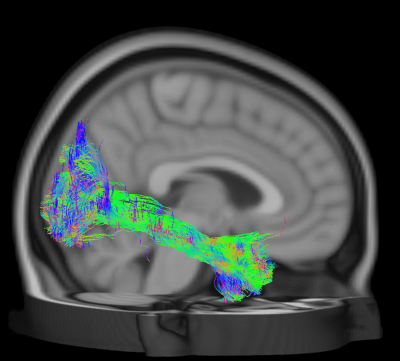 |
Computer Number: 58
1430. Exploring
White Matter Integrity in Leber's Hereditary Optic Neuropathy:
Insights from Inferior Longitudinal Fasciculus Tractography
F. Punzetti, L. Motta, V. Pollarini, G. Vornetti, G.
Sighinolfi, C. La Morgia, G. Amore, V. Carelli, D. N.
Manners, R. Lodi, C. Tonon
IRCCS Istituto delle Scienze Neurologiche di Bologna, Bologna, Italy
Impact: The results provide new insights into ILF
changes in LHON, guiding future research into white matter's
role in visual symptoms. This enhanced finding could lead to
an increase in the knowledge of disease development aimed to
targeted therapeutic strategies.
|
|
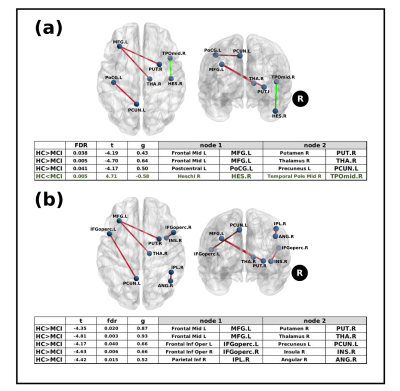 |
Computer Number: 59
1431. White
Matter Alterations in MCI Using Free-Water Corrected
Tractography: A Comparative Study with Standard DTI
M. Bergamino, M. Sabbagh, A. Stokes
Barrow Neurological Institute, Phoenix, United States
Impact: The study suggests that fw-corrected
tractography could provide a more accurate assessment of
white matter changes in MCI. This technique may offer
enhanced sensitivity in detecting subtle microstructural
alterations, which could be critical for early detection and
intervention in MCI.
|
|
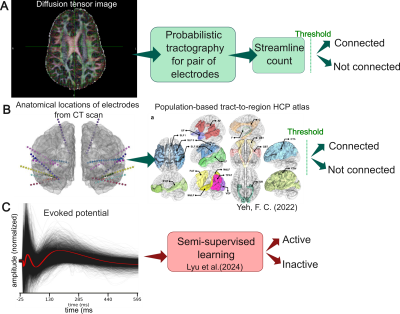 |
Computer Number: 60
1432. Can
Tractography Predict Electrophysiological Connectivity?
S. Shailja, D. Lyu, G. Kung, L. Mortazavi, E. Dai, V. Buch,
K. Deisseroth, J. Parvizi, J. McNab
Stanford University, Palo Alto, United States
Impact: If we can predict the probability of
electrophysiological signals via tractography then we have a
non-invasive tool for predicting
electrophysiological signaling in the brain with broad
scientific and clinical applications including guidance for
placement of electrodes for functional neurosurgeries.
|
|
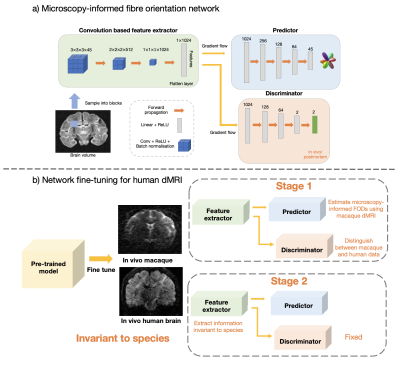 |
Computer Number: 61
1433. Estimating
microscopy-informed fibre orientations from dMRI data in the UK
Biobank
S. Zhu, N. Dinsdale, S. Jbabdi, K. Miller, A. Howard
University of Oxford, Oxford, United Kingdom
Impact: We present a deep-learning model that
reconstructs microscopy-informed fibre orientations from in
vivo human dMRI data, enabling tractography that may better
capture individual brain connectivity differences compared
to conventional methods.
|
|
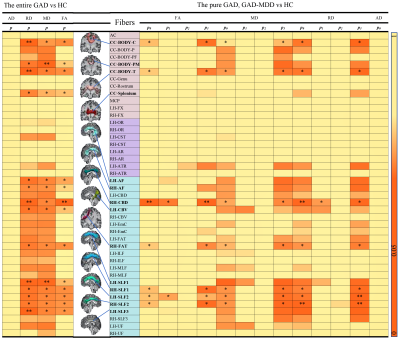 |
Computer Number: 62
1434. Shared
and distinctive changes of the white matter in generalized
anxiety disorder with or without depressive disorder
H. Zhou, H. Li, L. Cao, S. Chai, C. Qiu, Q. Gong, X. Huang
Department of Radiology and Huaxi MR Research Center (HMRRC), Functional and Molecular lmaging Key Laboratory of Sichuan Province, West China Hospital, Sichuan University, chengdu, China
Impact: This study identified shared and distinctive
changes in GAD patients with or without MDD groups. Current
study gave a comprehensive characterization of white matter
abnormalities among these patients, and highlight TRACULA's
value in identifying critical white matter changes.
|
|
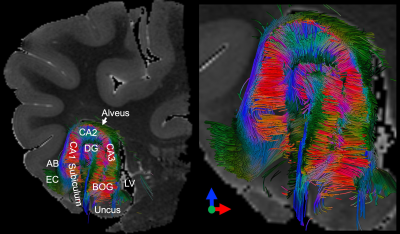 |
Computer Number: 63
1435. Mesoscale
connectivity of the human hippocampus and fimbria revealed by ex
vivo diffusion MRI.
M. Modo, M. McCrea, N. Reddy, K. Ghobrial, R. Ahearn, R.
Krafty, T. Hitchens, J. Gonzalez-Martinez
University of Pittsburgh, Pittsburgh, United States
Impact: Improving our conceptualization of intra- and
extra-hippocampal connectivity is essential to further
understanding of the structure-function relationship of
hippocampal networks and how these are impacted by
neurological and psychiatric conditions.
|
|
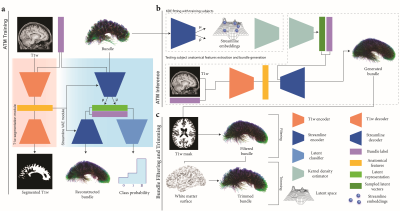 |
Computer Number: 64
1436. Anatomy
to Tract Mapping: A Repeatability Study
Y. F. Tan, S. Liu, K. Minh Huynh, R. C.-W. Phan, C-M Ting,
P-T Yap
Monash University, Selangor, Malaysia
Impact: We show that bundle streamlines can be estimated
directly from anatomical MRI. The generated streamlines
exhibit robust test-retest reliability, contributing to (1)
inferring streamlines when diffusion MRI is unavailable, (2)
reducing local uncertainties in tractography, enhancing
white matter pathways reconstruction.
|
The International Society for Magnetic Resonance in Medicine is accredited by the Accreditation Council for Continuing Medical Education to provide continuing medical education for physicians.